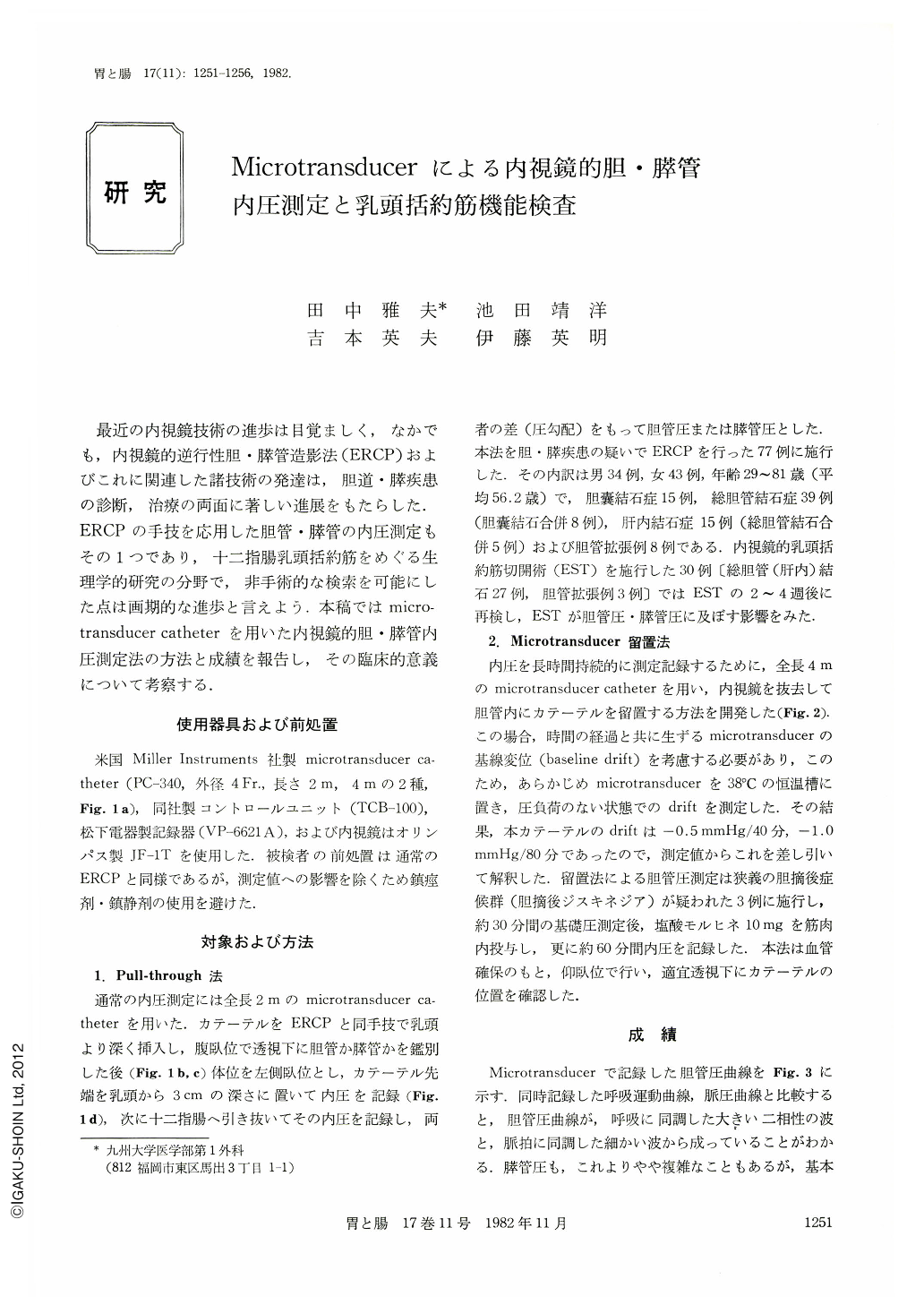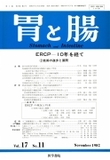Japanese
English
- 有料閲覧
- Abstract 文献概要
- 1ページ目 Look Inside
最近の内視鏡技術の進歩は目覚ましく,なかでも,内視鏡的逆行性胆・膵管造影法(ERCP)およびこれに関連した諸技術の発達は,胆道・膵疾患の診断,治療の両面に著しい進展をもたらした.ERCPの手技を応用した胆管・膵管の内圧測定もその1つであり,十二指腸乳頭括約筋をめぐる生理学的研究の分野で,非手術的な検索を可能にした点は画期的な進歩と言えよう.本稿ではmicrotransducer catheterを用いた内視鏡的胆・膵管内圧測定法の方法と成績を報告し,その臨床的意義について考察する.
With the advent of endoscopic manometry, nonoperative investigation of pancreatic and common bile duct (CBD) pressures and the sphincter of Oddi func-tion has become possible. Pancreatic and CBD pressures were measured with a 2 m long, 4 French microtransducer catheter in 77 patients with gallbladder stones (15), CBD stones (39), intrahepatic stones (15) or CBD dilatation (8). A pull-through technique was utilized with the patient on the left lateral position. Anticholinergic or sedative drugs were not used to avoid their possible effects on the pressure values. The pressures showed a biphasic change synchronous to respiration and superimposed by small variations transmitted from arterial pulsation. The CBD-to-duodenum pressure gradient in the intrahepatic stone group was significantly lower than that in the CBD stone group. No significant difference was found between the CBD-to-duodenum gradients of the other groups, or between the pancreatic duct-to-duodenum gradients of the four disease groups. The pressures were measured before and after endoscopic sphincterotomy in 30 patients, demonstrating significant reduction after the procedure not only in the CBD-to-duodenum gradient but also in the pancreatic duct-to-duodenum gradient.
For continuous pressure recording for a longer period, a 4 m long microtransducer catheter was introduced into the CBD and left in place after removal of the endoscope. The indwelling microtransducer manometry was performed on three patients suspected of postcholecystectomy dyskinesia, and CBD pressure was continuously monitored for 30 min before and 60 min after intramuscular administration of 10 mg of morphine. Morphine reproduced pain, while the CBD pressure rose and the pressure waves became irregular in shape and high in amplitude, the degree of these pressure changes being well related to the intensity of the pain. Since spasm of the sphincter of Oddi was considered to be responsible for the pain and the pressure changes, endoscopic sphincterotomy was performed with complete relief of the symptoms. A repeat morphine-induced pressure measurement after the sphincterotomy confirmed the disappearance of the pain and the irregular waves.

Copyright © 1982, Igaku-Shoin Ltd. All rights reserved.


